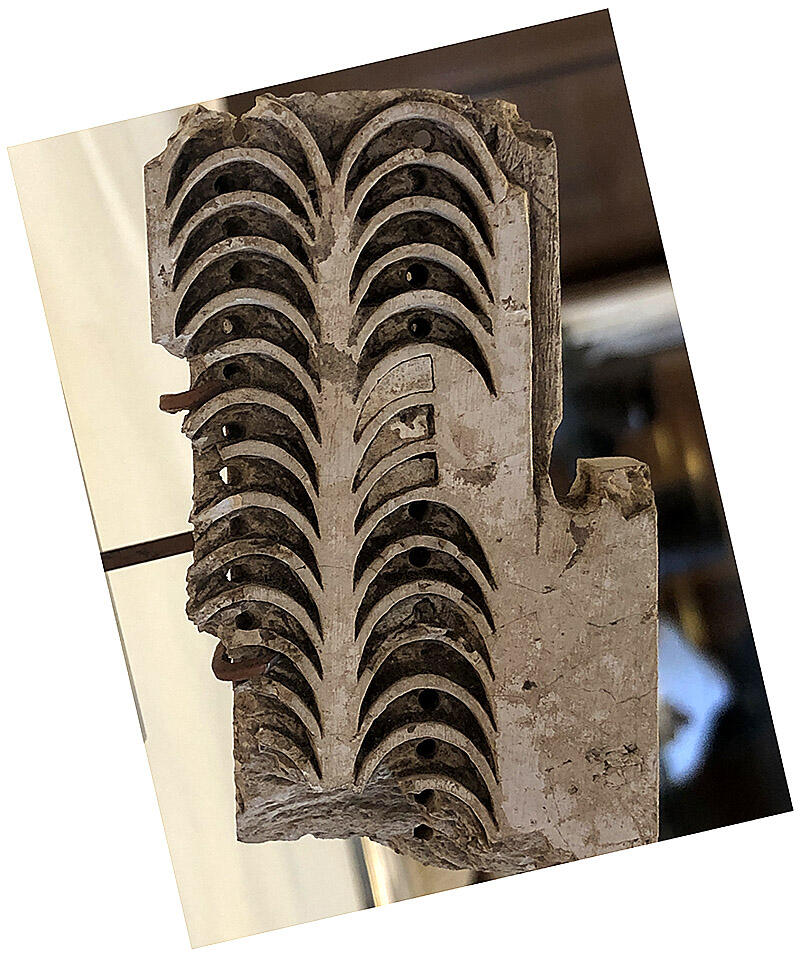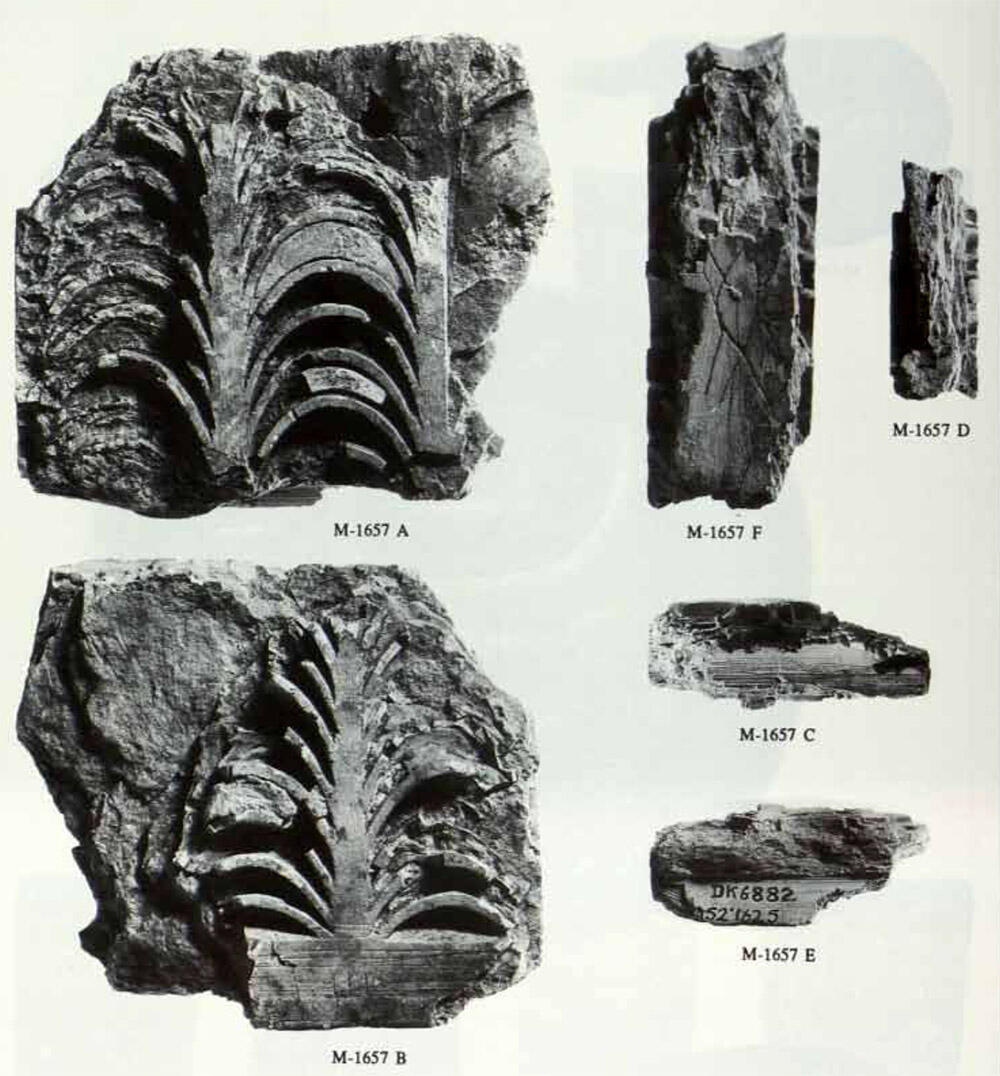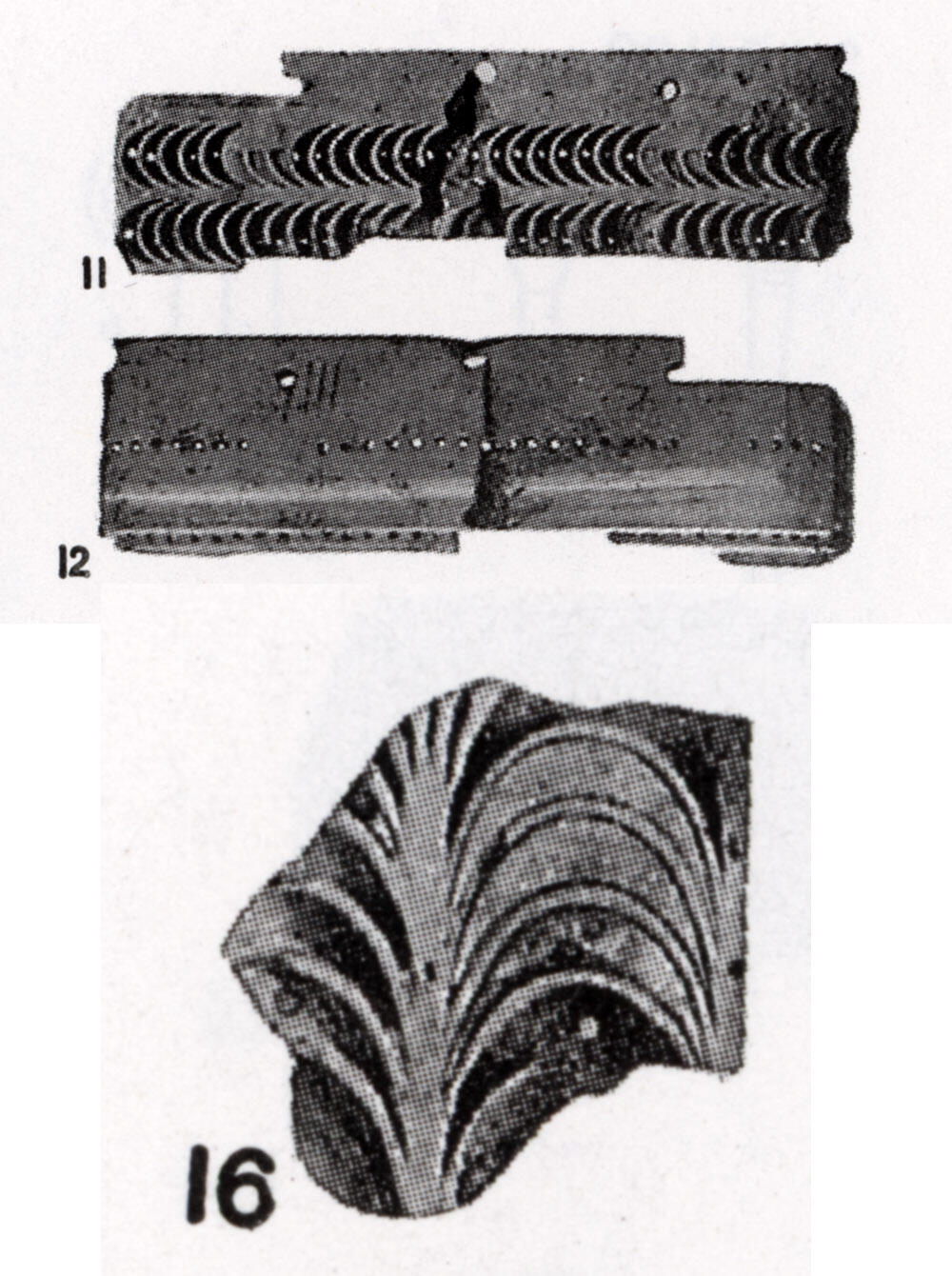One of the most mysterious of pieces in the gallery. It rests horizontally in the display case but has been straightened here because to me it looks like some sort of tree or tree-themed altar, which is the way Shah and Parpola show a different pieces in their Corpus (M1657, DK6882).
There are also additional images [2 and 3, above] for other similar pieces found at Mohenjo-daro, of which Ernest J.H. Mackay writes in Further Excavations at Mohenjo-daro (p. 586):
"Nos. 11 and 12 in Pl. CVI (DK 11404, DK 12097 [Image 2 above]) show the front and back of a slab of inlaid steatite which apparently once formed part of a yet larger plaque, that may, or may not, itself have been inlaid in some other material. Indeed, several pieces of this kind of inlay have been found in t h e DK Area and may have belonged to the piece illustrated or to others like it (Pl. CXLI, 16 [Image 3]). It is certain that these pieces of inlaid stone once served a very important purpose, and that this one was purposely smashed seems evident from the smallness of the pieces found. Possibly a shrine ornamented with this inlaid stone was broken up by the same people who so badly damaged the few stone statues that have been unearthed [Footnote: There may, indeed, have been raiders who were responsible for the skeletal remains found in various parts of the city].
"This interesting fragment of inlaid stone is 6•4 ins. long, by 1•9 ins. wide and 0•55 in. thick. The flat border along one side of the inlaid design is 0•67 in. wide and has four well drilled holes pierced through it, each 0•12 in. in diameter.
The two rows of crescentic cells, which average 0•12 in. deep were originally filled in with what appears to be a steatite paste, of which traces remain here and there. This inlay seems to have been inserted when moist as what is left fits very well; and it was levelled flat with the face of the stone. It is probable that as no colour now remains, the inlaid paste was covered with a brilliant blue or green glaze rather than stained; and if so, the result would have been very striking.
"Though we have only this double row of crescents, the stepping of the edge and one end of the block suggests that other pieces of steatite were added to repeat the pattern and make quite a large p a n e l . The other end of the block is broken off. There are two roughly scratched marks on the back, one V-shaped and the other comprising four parallel strokes, which probably served as guides for the fitting together of several pieces. [Footnote: This V-shaped mark may be a variant of the U-shaped signs on some of the copper implements (Pl. CXXVI, 2, 5). If so, this object would bear the number 14.]
"In the base of each of the crescentic cells, save only the shorter ones, a small hole, some 0•06 in. in diameter, was pierced to key in the inlay. For this purpose also, the floor of each cell had been left rough. The whole thing is a beautiful piece of work; the back even was smoothed down, though evidently not intended to be seen. Portions of the wide border seem to have been cut away, probably at a later date, for some other purpose, such as making a seal. It is otherwise difficult to account for the removal of a slice from the upper portion of the border. The edges of this cut are quite smooth.
"The two parts of this piece of inlay work were found separately, though they were not very far removed from one another. Locus of DK 11404: Bl. 18, rm. 101. Level: -6•2 ft. Locus of DK 12097: Bl. 18, rm. 94. Level: - 3•8 ft."






